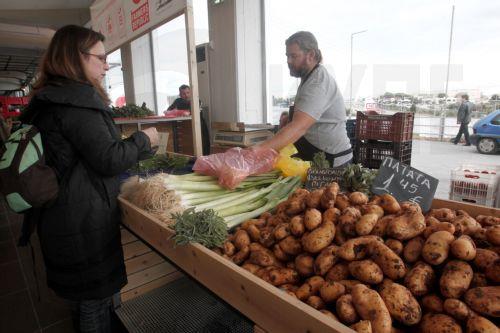No potato shortage is expected at present, the head of the potato producers’ association, Andreas Karyos, said on Wednesday, while farmers across the island assess damage caused by the recent frost.
Damage estimates in the Paphos district have been completed, with the district’s agricultural insurance officer, Kostas Neophytou, telling the Cyprus News Agency that approximately 5,000 acres of potatoes were affected.
The most affected communities in the district include Mandria, Timi, Kouklia, Geroskipou, Anarita, Achelia, Ayia Varvara, Emba and Kissonerga.
Teams from the department of agriculture started assessing damage on Monday morning in the Polis Chrysochous area, in eastern and western Paphos, and in semi-mountainous regions, including the area between Polemi and Stroumbi.
The initial assessment focused primarily on potato plantations, Neophytou said, urging affected farmers to submit compensation claims within 15 days once the process is officially announced.
Evaluating the extent of damage to citrus groves and banana plantations will take another 10 to 15 days, he added. Since the banana harvest had already been completed, minimal compensation claims are expected.
Speaking on CyBC radio early on Wednesday, Karyos had said potatoes will be more expensive in the next two to three months due to crop losses.
He added that potato producers would contribute to a general recovery fund that has been proposed.
Farmers in Larnaca and Famagusta had recently taken last-ditch measures to protect their potatoes and other crops by watering them overnight to minimise losses.
Teams from the agriculture ministry visited affected fields in these districts on Monday to assess damages and the ministry had assured that “all possible support” would be given and expedited.
Additional water was supplied to protect crops until the midweek temperature increase forecasted.
Agriculture Minister Maria Panayiotou was also in contact with the Electricity Authority (EAC) to ensure there were no power cuts so that farmers could continue efforts to protect their crops and livestock.







Click here to change your cookie preferences